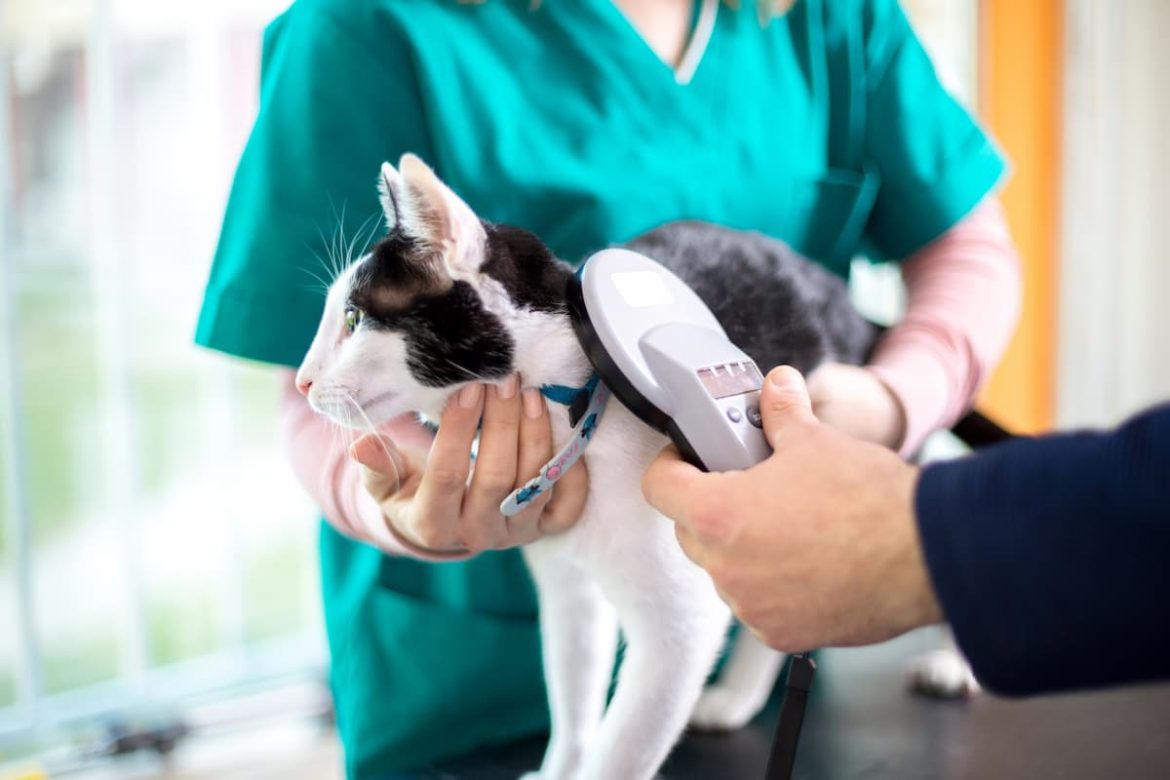Microchipping is a crucial factor in being a responsible pet parent. Not only is it mandatory in large parts of Australia, but it also provides your pet with an essential form of ID if they go missing, which could make all the difference in getting them home safely.
In this article, we’ll explore all the elements of pet microchipping, including details on where and when to microchip, microchipping costs, registry information, and whether or not it is mandatory in your state.
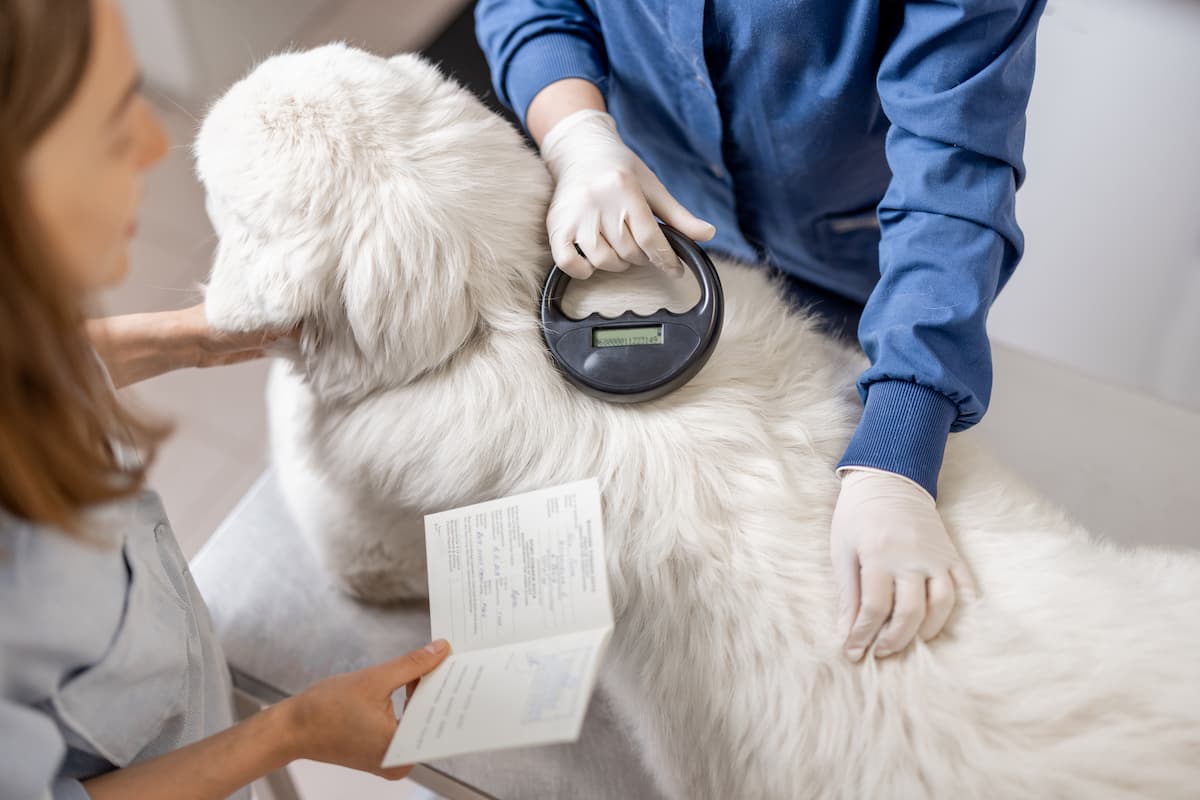 The importance of microchipping your pet
The importance of microchipping your pet
Losing our beloved companions is a pet parent’s worst nightmare, which is why it’s so important to provide our pets with proper identification. There are several ways to provide your pet with an ID, all of which have benefits, but it is crucial to microchip your pets for several reasons.
Microchipping provides your pet with a permanent form of ID. Once the chip is implanted, it stays with them for life, so you don’t have to worry about maintenance or replacements (you need to keep your details up-to-date, though!). And, unlike collars, which often break or allow your pet to crawl out of them, it is extremely rare for a microchip to become dislodged.
The procedure is simple: a microchip roughly the size of a grain of rice is implanted just below the skin, usually between the shoulder blades. This process is quick and minimally painful for your pet.
Additionally, microchipping is mandatory in most areas of Australia, so you could face a fine of up to $5,000 if you fail to implant and maintain a microchip.
Is pet microchipping mandatory?
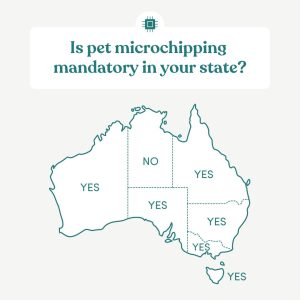
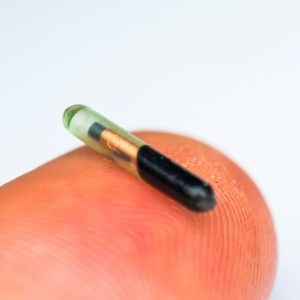
For the majority of Australia, microchipping is mandatory, though each state has different regulations as outlined below:
ACT
Microchipping is mandatory. The Domestic Animals Act 2000 and the Domestic Animals Regulation 2001 require all cats and dogs to be microchipped before sale and by the age of 12 weeks.
NSW
Microchipping is mandatory. The Companion Animals Act 1998 requires all cats and dogs to be microchipped before sale and by the age of 12 weeks.
In addition, it is mandatory to include identification numbers in advertisements for selling or giving away a cat or dog. Per the Prevention of Cruelty to Animal Act 1979, this can be the microchip number, breeder identification number, or rehoming organisation number. This allows people to view the pet’s details and make informed decisions about their purchase.
NT
Microchipping is not mandatory. However, it is compulsory as part of the Council’s Animal Management by-laws if you live in the City of Darwin. Other local governments could implement similar by-laws, so you should check current regulations with your local authority.
QLD
Microchipping is mandatory. The Animal Management (Cats and Dogs) Act 2008 requires all cats and dogs to be microchipped before the age of 12 weeks. There are some exceptions, but you would need to provide a valid reason, such as a medical note from your vet.
SA
Microchipping is mandatory. The Dog and Cat Management (Miscellaneous) Amendment Act 2016 requires all cats and dogs to be microchipped before sale and by the age of 12 weeks.
TAS
Microchipping is mandatory. The Dog Control Act 2000 requires all dogs to be microchipped by 6 months.
Microchipping cats is mandatory before they are sold or given away and by the age of 4 months. There are some exceptions, but you would require a vet-issued certificate stating that microchip implantation could negatively impact the cat’s health and welfare.
VIC
Microchipping is mandatory. The Domestic Animals Act 1994 requires all cats and dogs to be microchipped by 3 months as a condition of the animal’s registration. You also need to microchip animals before selling or transferring if you are a domestic animal business.
The Domestic Animals Act also requires animal advertisements to include the animal’s microchip number. Domestic animal businesses must display either the microchip number or breeder registration number along with the name of the issuing council.
In addition, any individual or business advertising a dog or cat for selling or giving away must enrol on the Pet Exchange Register.
WA
Microchipping is mandatory. The Dog Act 1976 requires all dogs to be microchipped before sale or transfer and by the age of 3 months. The Cat Act 2011 requires all cats to be microchipped before sale or transfer and by the age of 6 months.
How much does microchipping cost?
The average microchipping cost for your pet is around $60-$80, depending on which state you’re located in and where you choose to have your pet microchipped. However, cats and dogs must be microchipped before sale or transfer, so the cost is the responsibility of the breeder or rescue centre, and it is often included in the adoption fee.
The microchip is often registered at the time of the procedure, so typically, there is no additional cost. However, depending on the type of pet, size, breed, and number of pets you already own, there are extra costs to register your pet with your regional council.
Finding free microchipping is challenging, but some vets or shelters may offer discounts from time to time. Additionally, the microchipping cost is small when considering that it lasts for a lifetime (and prevents you from incurring fines), and it vastly increases your chances of being reunited with a lost pet.
Where to get your pet microchipped
You may be wondering, “Can I access microchipping near me?” The answer is yes, you can. Most vets and animal welfare organisations, along with some local councils, can microchip your pet. Only authorised microchip implanters are permitted to carry out this procedure, so your local vet or animal shelter is the best place to start.
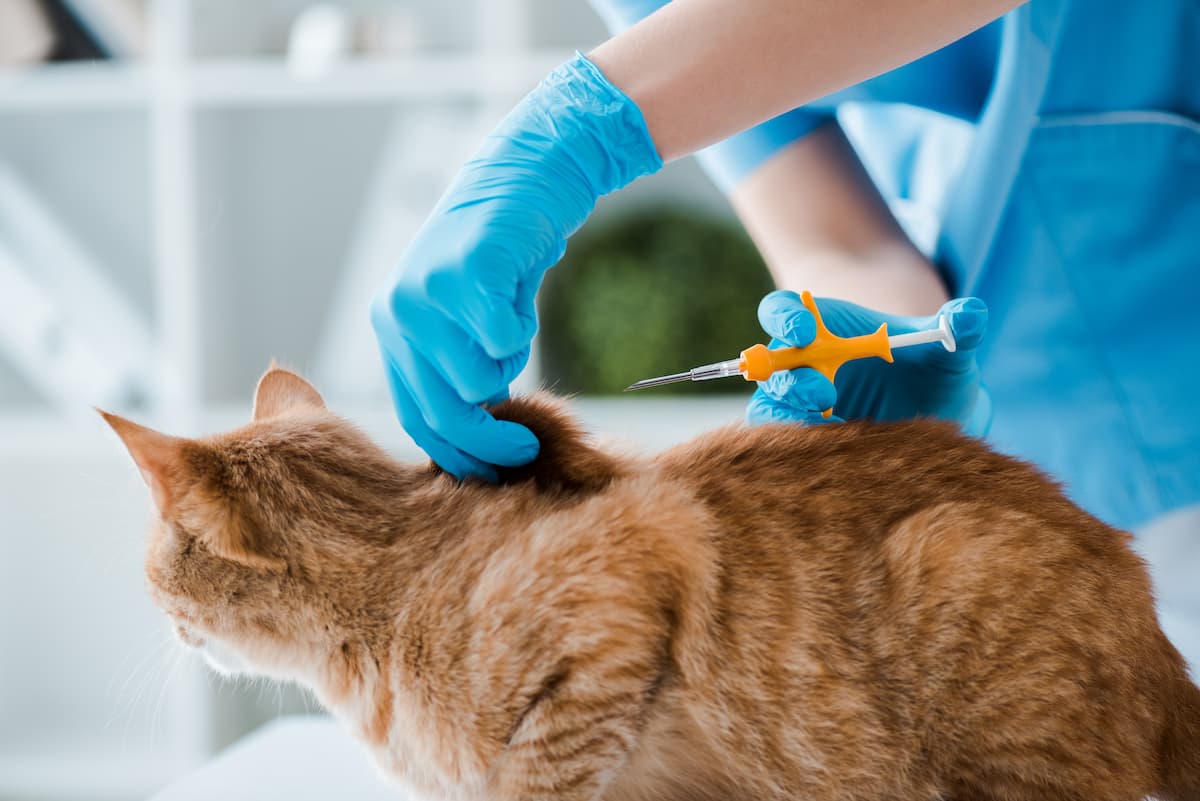 Where the information is stored
Where the information is stored
When your pet is microchipped, its number is recorded on a database registry along with your details. It’s crucial that you know where this information is stored and keep your details up-to-date.
There are currently five private microchip registries and two state government registries:
- Australasian Animal Registry
- Central Animal Records
- Petsafe
- HomeSafeID
- Global Micro
- NSW Government Registry – the NSW Companion Animal Registry
- SA Government registry – Dogs and Cats Online (DACO)
The easiest way to identify which registry is linked to your pet’s microchip number is to search http://www.petaddress.com.au.
If you have a greyhound and its number is not listed on any of the above registries, you should check the Greyhound Microchip Registry. This dog microchip register includes all Victorian-born greyhounds, including racing hounds and retired hounds.
What happens if your pet goes missing
It’s a horrible feeling when you realise your pet is missing, but there are several steps you can take to ensure their safe return.
- Check the local area and alert neighbours that your pet is missing.
- Report your missing pet to local vet clinics, animal shelters, and councils.
- Contact your microchip registry and ensure all your details are current and correct.
- Post your missing pet on social media and regularly check any local lost pet pages.
- Register your missing pet with your local RSPCA.
It’s important to note that microchips are not tracking devices; they are not GPS, but they significantly increase the chances of a safe return. The most crucial element of successful microchipping is to keep your details current. That way, when someone finds your pet, the local vet, rescue shelter, or even council will be able to contact you and reunite you with your precious companion.

